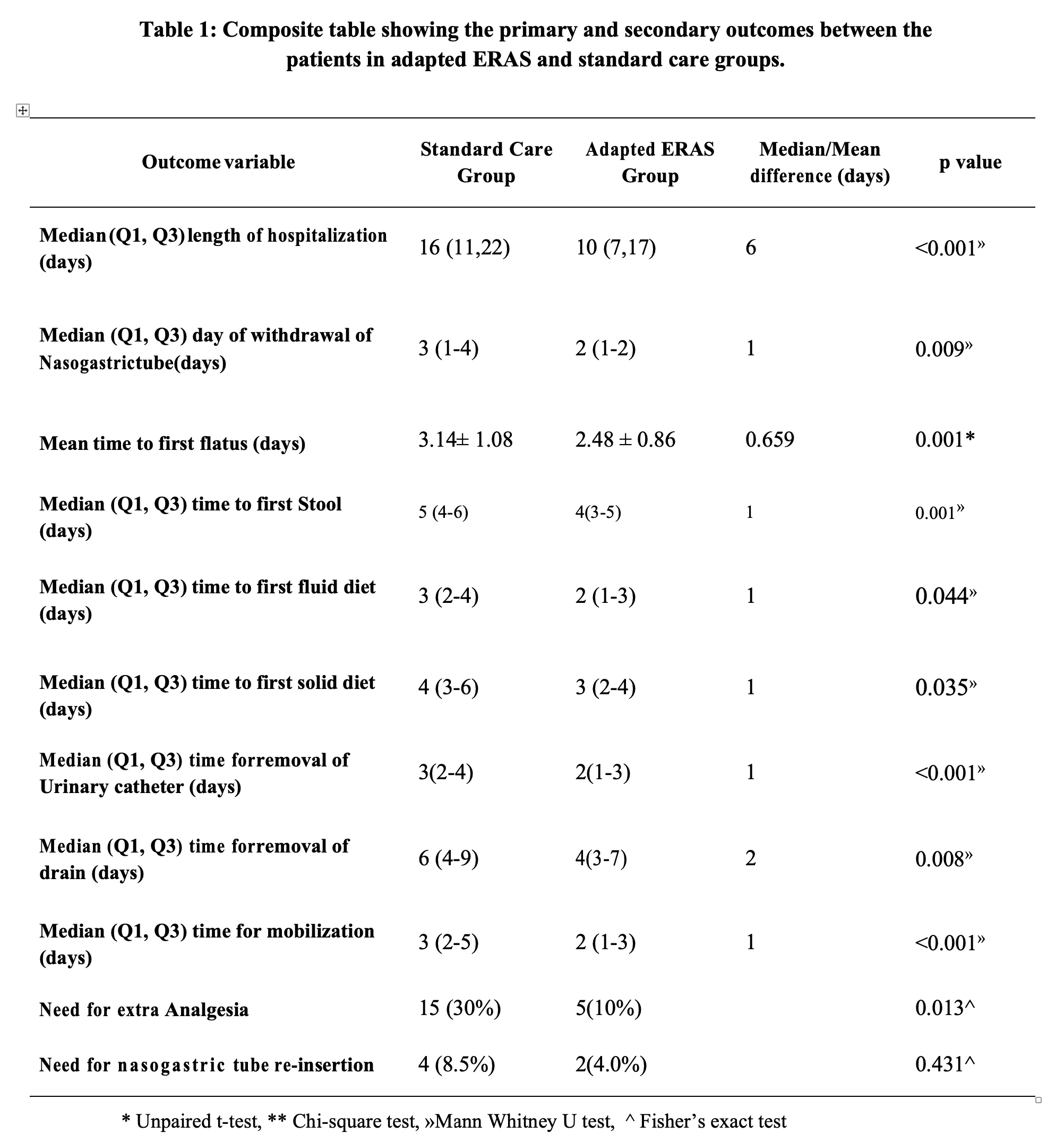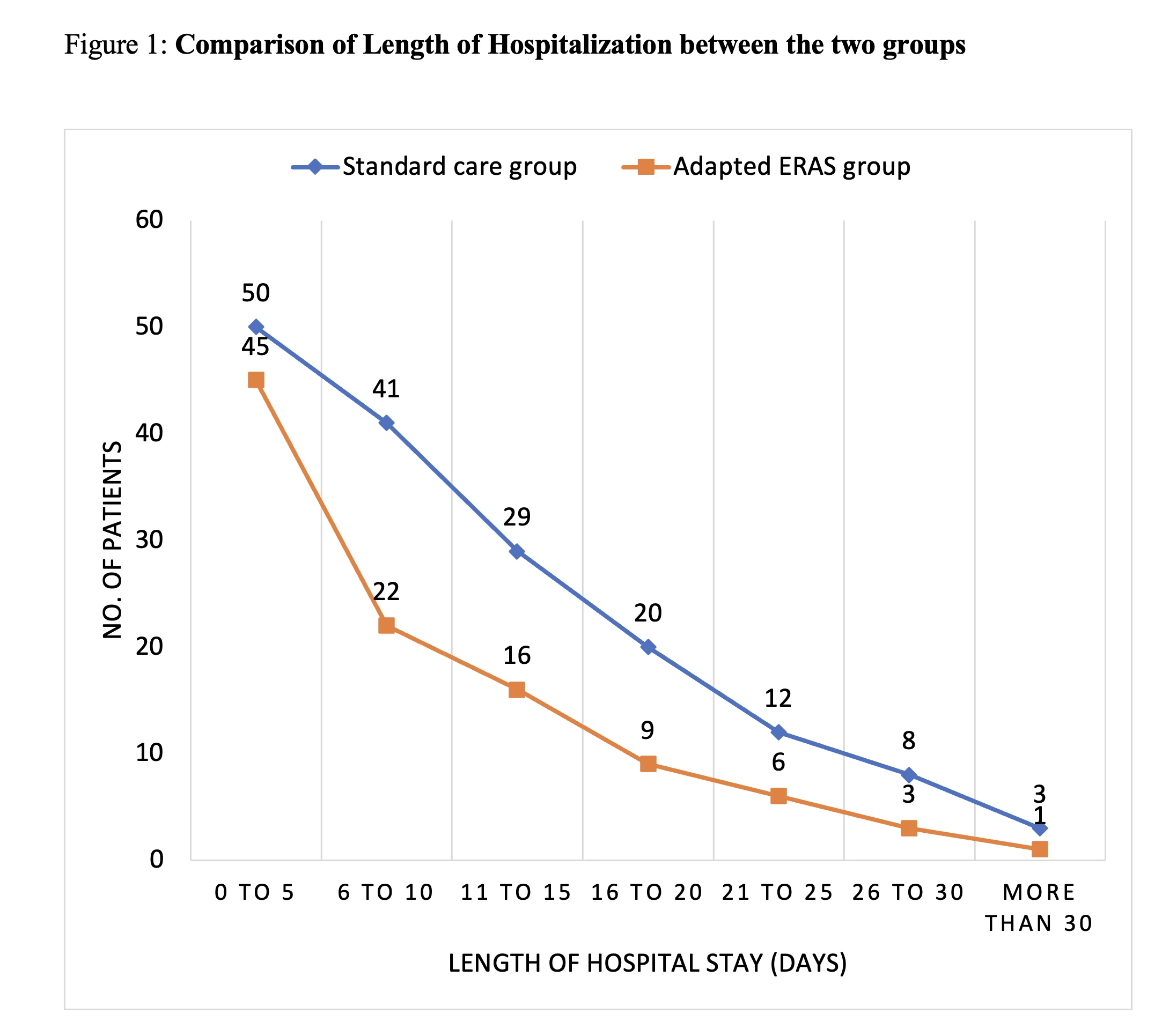682
COMPARISON OF ADAPTED ENHANCED RECOVERY AFTER SURGERY (ERAS) PATHWAY VERSUS STANDARD CARE IN PATIENTS UNDERGOING EMERGENCY ABDOMINAL SURGERY – A RANDOMIZED CONTROLLED TRIAL.
Date
May 20, 2024
Tracks
Related Products
ESTABLISHING A SUCCESSFUL SSAT CHAPTER IN INDIA
SOCIETY: SSAT
COMPARISON OF ENHANCED RECOVERY AFTER SURGERY (ERAS) PATHWAY VS. STANDARD CARE IN PATIENTS UNDERGOING ELECTIVE STOMA REVERSAL SURGERY- A RANDOMIZED CONTROLLED TRIAL
BACKGROUND: Gastroesophageal reflux disease (GERD), with or without hiatal hernia (HH), affects millions of individuals worldwide, with a significant economic impact and loss of health-related quality of life…
SPECTRUM OF PERFORATED PEPTIC ULCER DISEASE IN A TERTIARY CARE HOSPITAL IN SOUTH INDIA: PREDICTORS OF MORBIDITY AND MORTALITY
An incisional hernia (IH) is one of the most frequent complications after a laparotomy, affecting between 10 -20% of patients…




